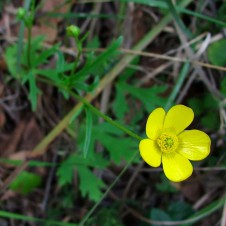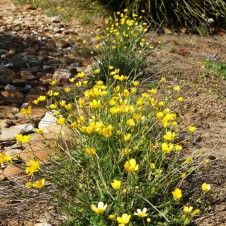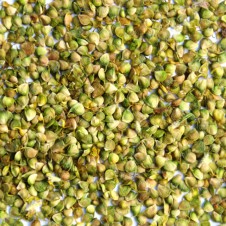General Description: A herb to 50 cm tall, with broad, deeply divided leaves and large, bright yellow flowers at the ends of slender stems.
Leaves: Arranged in a rosette at the base of the plant, broadly triangular, 3-6 cm long, deeply divided into three, toothed leaflets, softly hairy.
Flowers and Fruit: Bright yellow, to 15 mm across, with 5, broad and rounded petals, borne singly at the ends of slender stems. Flowers from August to November.
Fruit: Elliptic, flat, dry seeds, to 3 mm long, with a hooked, off-centre point. Both surfaces smooth. Arranged in a tight cluster of 20-50 at the end of flower stalk.
Site Preference and Tolerances: Grows in a range of soils. Prefers full sun or part shade and damp conditions or occasional flooding. Found in grassy woodlands and more open parts of forests.
Life Span: This is a small perennial forb that regenerates easily and persists well in the Australian environment.
Wildlife Value: Flowers are insect attracting and this plant provides seed for seed eating fauna. Works well on the edge of frog ponds and in wet areas that provide habitat for fogs and tadpoles.
Other Values and Uses: Looks lovely in the lower or wetter parts of the garden. Found naturally in watercourses, wetlands and sheltered slopes. It performs well in cultivation and is a suitable choice for sunny or semi-shaded sites. It can be grown as a bedding plant in formal or informal drifts as well as in rockeries or containers.
Other Common Names: Common Buttercup
Germination Information: Usually grows well in a few weeks without any treatment.



